7 Ways to Save Money When Selling Your Home
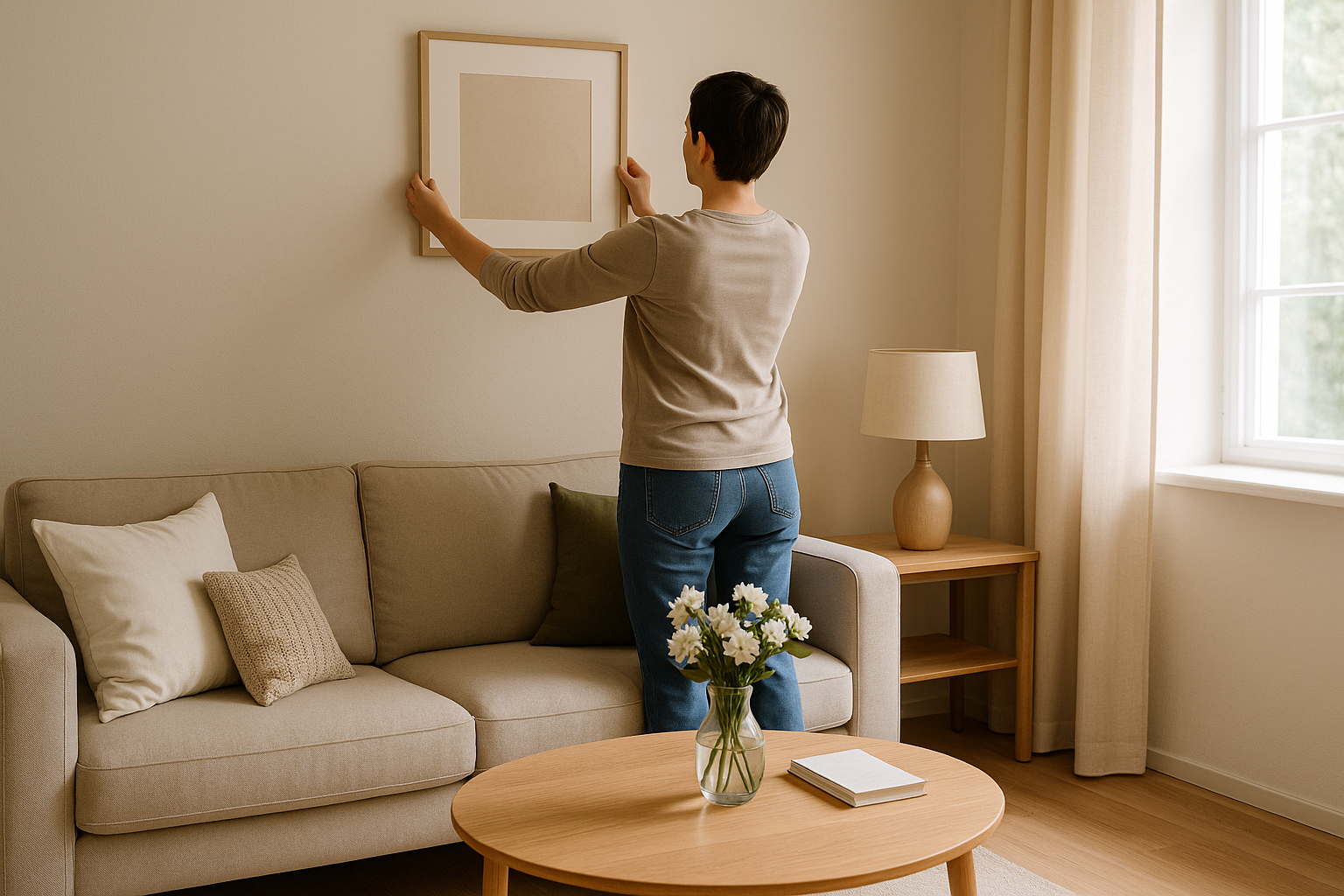
Selling your home can be expensive, but there are practical ways to cut costs without sacrificing results. The average cost to sell a home in 2024 was $54,616, with agent commissions and unexpected expenses eating into profits. Here are seven strategies to help you save thousands: DIY Staging: Skip professional stagers. Focus on decluttering, cleaning, and refreshing key areas like the kitchen, living room, and primary bedroom. Flat-Fee MLS Services: List your property on the MLS for a fixed rate, avoiding traditional agent commission fees. Negotiate Agent Fees: Many agents are open to reducing their commission, especially for higher-priced homes or quick sales. Prioritize Repairs: Focus on essential fixes and high-ROI updates like fresh paint or minor kitchen improvements. Skip costly renovations. Set the Right Price: Avoid overpricing to prevent your home from sitting on the market too long. Use market data and appraisals to price competitively. Handle Paperwork Yourself: Manage forms like disclosures and purchase agreements to save on administrative fees. Seek legal help only when necessary. Efficient Marketing: Use free or low-cost platforms like social media and flat-fee MLS services to showcase your home effectively. These tips can help you minimize costs, maximize profits, and streamline the selling process. 1. Stage Your Home Yourself Hiring a professional stager can be expensive, but tackling the job yourself can be just as effective. According to research, 81% of buyers’ agents say staging helps potential buyers picture themselves living in a home, and 44% of agents believe it can even boost the final sales price. Focus on the Big Three: Kitchen, Living Room, and Primary Bedroom Start with the areas that buyers care about most. These three rooms tend to receive the most attention during showings: Kitchen: Clear off countertops, leaving just one or two neutral accents. Stash away appliances, sponges, and any visible clutter. Living Room: Arrange furniture to emphasize the room’s size and flow. Avoid overcrowding by temporarily storing extra pieces. Primary Bedroom: Keep surfaces like dressers and nightstands clear, leaving only essentials for a clean and streamlined appearance. Declutter and Depersonalize One of the simplest ways to prep your home for sale is by removing clutter and personal items. This helps buyers imagine their own belongings in the space. In fact, decluttering alone can increase your home’s sale price by 3–5%. Boost Your Curb Appeal First impressions matter, and your home’s exterior is the first thing buyers will see. In fact, 98% of agents say curb appeal is crucial. Simple updates like power-washing, touching up deck varnish, or repainting the front door can make a big difference. DIY staging doesn’t have to cost a fortune. By focusing on cleanliness, organization, and using what you already own, you can create a welcoming space that appeals to buyers. Plus, it pays off: 48% of seller’s agents report that staging helps homes sell faster. 2. Use Flat-Fee MLS Listing Services Getting your property listed on the MLS (Multiple Listing Service) is crucial for reaching potential buyers. Flat-fee MLS services let you sidestep traditional percentage-based commission costs, giving you more control over the selling process while keeping expenses low. Traditional real estate agents typically charge about 5.44% in total commission, split roughly into 2.77% for the listing agent and 2.67% for the buyer’s agent. For a home priced at the U.S. median of $367,700, these fees can exceed $20,000. Flat-fee MLS services, on the other hand, charge a fixed rate, usually between $99 and $499 for basic plans. Real Savings for Higher-Priced Homes The higher your home’s value, the more you save. For instance, on a $500,000 home, opting for a $5,000 flat fee instead of a 3% commission could save you around $10,000. Even on a $200,000 property, a flat fee could save you approximately $1,000 compared to traditional commission rates. What Flat-Fee MLS Services Offer Flat-fee MLS services cover the basics: your property gets listed on the local MLS, which then feeds into major real estate platforms like Zillow and Realtor.com. This exposure is essential: 88% of sellers use the MLS, and homes listed there tend to sell for about 18% more than those that aren’t. Before committing to this approach, consider whether you have the time and skills to manage the sale yourself. If you’re confident in your ability to handle the process, flat-fee MLS services can help you save thousands while keeping your home visible to serious buyers. 3. Negotiate Agent Fees Did you know that real estate agent commissions are negotiable? Research shows that 64% of sellers manage to reduce fees simply by asking. Yet, a surprising 81% of sellers only contact one agent, missing out on the opportunity to leverage competition. Understanding the Current Commission Landscape Typically, real estate commissions range between 5% and 6% of your home’s sale price, split between the listing agent and the buyer’s agent. However, there’s room to negotiate. A survey found that 42% of sellers agree to a 3% fee, while 33% manage to bring it down to 2.5%. Current market conditions provide a great chance to negotiate commission rates – Trent Seigfried, Data Analyst at Clever Real Estate. When You Have the Most Leverage Your ability to negotiate depends on your home’s features and the local market. Higher-priced homes often secure lower commission rates because even a smaller percentage can still provide substantial earnings for agents. How to Approach the Conversation Timing is everything. Bring up commission rates when you first meet with potential agents. Instead of focusing solely on lowering fees, try to emphasize the value you bring to the table. If you want to talk with your real estate agent about fees and ask for a discount, do so respectfully with the understanding that at the end of the day, most real estate agents depend on commissions to survive – Jacob Channel, LendingTree Economist. 4. Focus on Necessary Repairs Only When prepping your home for sale, stick to repairs that matter most. This approach keeps costs in check while making your property more appealing
Can’t Sell Your Home? 6 Common Problems Fixed
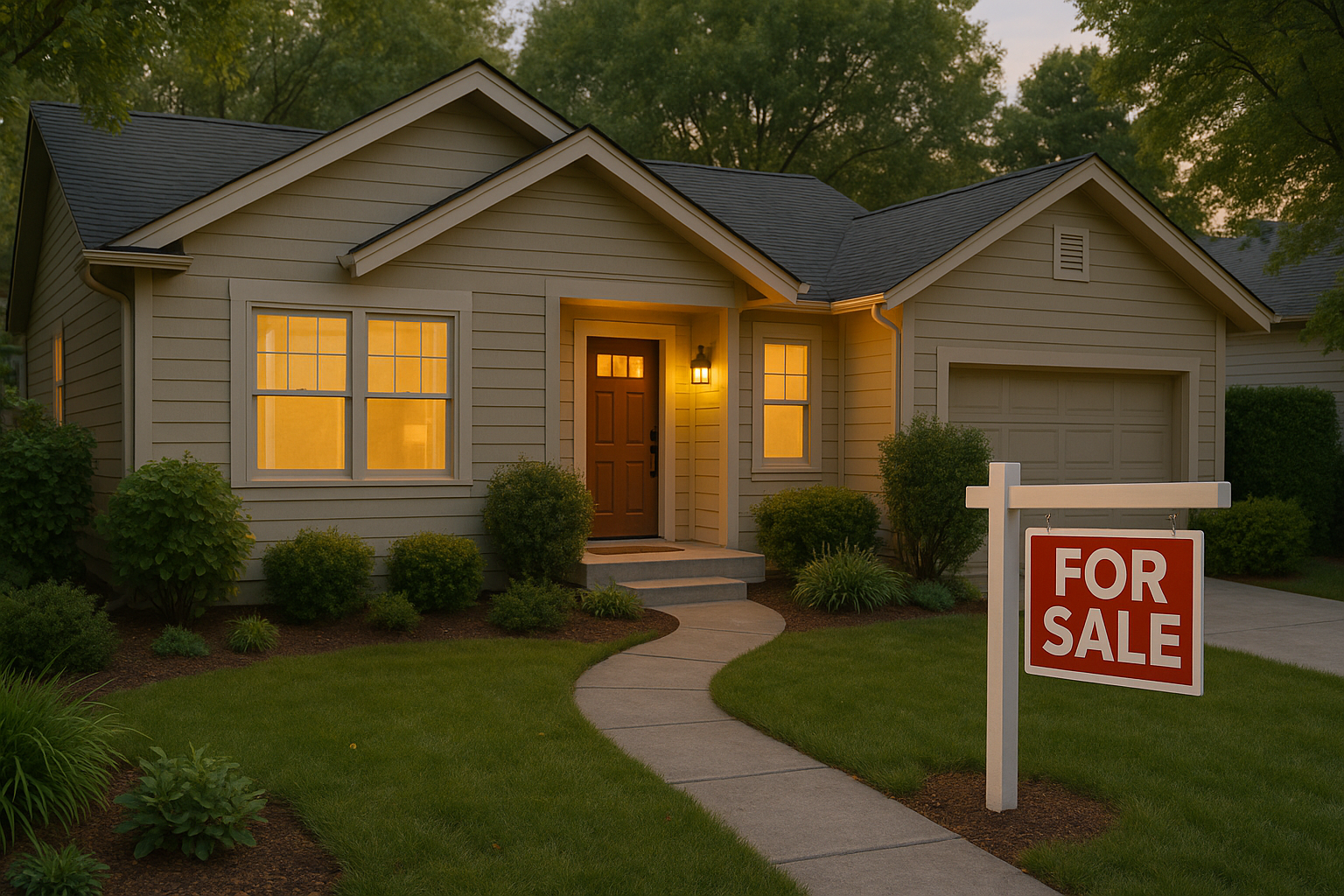
Can’t Sell Your Home? 6 Common Problems Fixed If your home isn’t selling, you’re not alone. By the end of 2024, 73,000 homes were pulled off the market after failing to sell – a 64% increase from the previous year. The good news? Most issues are fixable. Here’s a quick breakdown of the 6 most common reasons homes don’t sell and how to solve them: Overpricing: Homes priced too high can scare off buyers. Set a realistic price based on a comparative market analysis. Poor Staging: First impressions matter. Declutter, clean, and use neutral decor to make your home inviting. Lack of Marketing: If buyers can’t see your home, they won’t buy it. Leverage social media, high-quality photos, and 3D tours. Listing Errors: Incomplete or inaccurate listings can drive buyers away. Highlight key features and use professional photos. Hidden Problems: Unresolved issues like leaks or faulty systems will surface during inspections. Address them upfront. Neglected Repairs: Small problems like squeaky doors or leaky faucets can create doubts. Fix these to show your home is well-maintained. Quick Tip: Homes that sell within the first 10 days often fetch 104% of their asking price, while those on the market for over 100 days drop to 97%. Start with a pre-listing inspection, price your home competitively, and focus on staging and marketing to attract buyers faster. Problem Solution Overpricing Use a comparative market analysis or pre-listing appraisal. Poor Staging Declutter, clean, and add neutral decor. Lack of Marketing Use social media, professional photos, and 3D tours. Listing Errors Highlight key features and ensure accurate details. Hidden Problems Conduct a pre-listing inspection and fix major issues. Neglected Repairs Address small issues like squeaky doors and leaky faucets. Selling a home can feel overwhelming, but tackling these issues head-on can help you close the deal faster and at a better price. 6 Common Problems That Stop Home Sales and How to Fix Them 1. Setting the Price Too High Overpricing is one of the biggest obstacles to selling a home. When the price is set too high, potential buyers might not even consider your property. In fact, 67% of real estate agents say poor pricing strategies are the most common mistake sellers make1. The statistics are clear: Homes in Massachusetts that sold within the first 10 days on the market received 104% of their original asking price. But homes that sat for over 100 days sold for just 97% of the original price2. When selling a home, nothing is more vital than pricing your home correctly. The right price will save time and effort. The wrong price has the exact opposite impact. – Bill Gassett, Massachusetts Real Estate News2 What you can do: Get a comparative market analysis to understand the value of similar homes in your area. A pre-listing appraisal can also help you set a fair price. Pricing just under round numbers (like $499,000 instead of $510,000) can make your property more attractive to buyers. Days to Sell Sale Price vs. Original List Price 1–10 days 104% 10–20 days 100% 20–60 days 98% 60–100 days 97% 100+ days 97% 2. Poor Home Staging and Appearance First impressions matter, and buyers form them in seconds. A home should feel welcoming and allow potential buyers to imagine themselves living there. Poor staging can turn buyers away and lower the offers you receive. Some common staging mistakes include: Leaving clutter in visible spaces. Displaying too many personal items, like family photos. Overcrowding rooms with large furniture. Blocking natural light with heavy curtains. Ignoring small but noticeable issues like squeaky doors4. Good staging doesn’t look like the place is staged. It just looks like a warm, inviting home. – Debra Gould, Home Staging Expert3 Simple staging tips to try: Start by deep cleaning every corner of your home. Remove personal items and excess furniture to create a more open feel. Paint walls in neutral tones and use small decor items, like fresh flowers or throw pillows, to add subtle color. Pro Tip: Keep pathways clear by maintaining 30–48 inches of space in main walkways and at least 24 inches in smaller areas3. Budget-friendly ideas: While professional staging can cost between $1,500 and $10,000, you can achieve great results on a smaller budget. Visit discount stores for decor items, and focus on small touches like mirrors to make spaces feel brighter and larger. 3. Not Enough Marketing Exposure If buyers don’t see your home, they won’t buy it. Limited visibility can leave even the most appealing properties unnoticed. In today’s competitive market, getting your home in front of the right audience is critical. Key stats to know: 54% of real estate agents say social media generates the highest quality leads56. 41% of buyers find 3D virtual tours highly helpful during their search7. Boost your home’s visibility: List your property on major platforms like Zillow, Realtor.com, and Trulia through MLS syndication. Build a social media presence on Facebook, Instagram, and Pinterest. Share your listing in local online groups to reach more potential buyers. I’m going to use the best technology in the marketplace to present your home – and people want to hear that. They want to hear what you are doing differently. Matterport absolutely makes me different. – Matt Grander, Owner of Grander and Associates7 4. Listing Mistakes and Missing Information Incomplete or inaccurate listings can drive buyers away. Poor-quality photos, missing details, or incorrect information can make your property less appealing in a competitive market. Common issues to watch for: Forgetting to mention key upgrades like new appliances or flooring. Providing inaccurate square footage or room counts. Writing vague descriptions that fail to highlight your home’s strengths. How to fix it: Invest in professional photography or learn how to take high-quality pictures yourself. Write descriptions that focus on benefits, not just features. For instance, instead of simply saying “granite countertops”, describe them as “durable granite countertops, perfect for meal prep and entertaining.” Mention nearby amenities like schools, shopping, and public transportation. Double-check your details: Verify square
What Is Flat Fee MLS Listing Service?
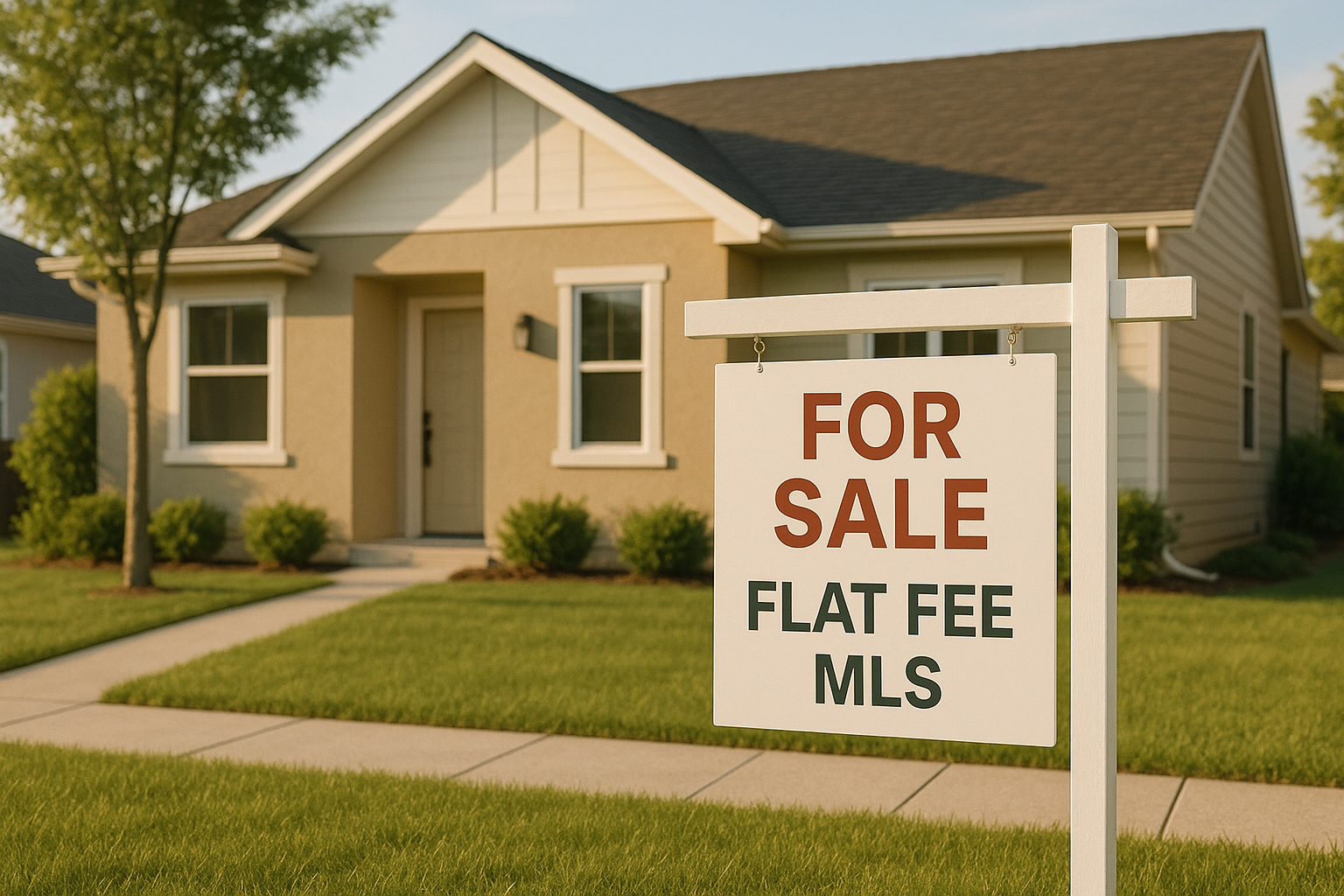
Flat Fee MLS Listing Services Flat Fee MLS Listing Services let you list your home on the MLS (Multiple Listing Service) for a one-time fee instead of paying a percentage-based commission to a real estate agent. This approach saves you money, gives you control over the selling process, and ensures your property gets maximum exposure on platforms like Zillow, Realtor.com, and Redfin. Key Benefits: Cost Savings: Avoid traditional 5-6% agent commissions. Flat fee services typically cost $100–$1,000. Broad Exposure: Your home is listed on the MLS and syndicated to major real estate platforms. Seller Control: You manage pricing, showings, and negotiations directly. Potential Drawbacks: DIY Approach: You handle most tasks like showings and paperwork. Limited Support: Basic plans may not include marketing or professional guidance. Upfront Costs: Fees are paid regardless of whether your home sells. Quick Comparison: Flat Fee MLS Traditional Agent Cost: Fixed fee ($100–$1,000) Cost: 5-6% commission Support: Limited, DIY Support: Full-service Control: High seller control Control: Moderate control Best For: Experienced sellers Best For: Busy or less experienced sellers Flat Fee MLS services, like HomeRise, offer flexible plans starting as low as $95, with options for added support if needed. They’re ideal for sellers who want to save money and are comfortable managing the sales process themselves. What is a Flat Fee Listing Agent-Broker and How Do They Work How Flat Fee MLS Listing Services Work Selling your home can be simpler and more cost-effective with a flat fee MLS service. By following a straightforward process, you can gain maximum exposure for your property without paying steep commission fees. Listing Your Property on the MLS Using a flat fee MLS service to list your home involves five main steps: Check reviews for providers to ensure reliability. Sign up online and select a package that fits your needs. Provide property details and upload photos to showcase your home. Review and sign the listing agreement, paying close attention to cancellation terms to avoid penalties. Verify your live MLS listing once it’s published. Most flat fee MLS services allow you to register online, pick a package, and pay an upfront fee that usually ranges from $89 to $1,299, depending on the service level you choose5. You’ll need to describe your home’s features, set a price, and complete disclosure forms about your property’s condition. Syndication to Major Real Estate Platforms After your property is listed on the MLS, it’s syndicated to leading real estate websites where the majority of buyers search for homes online. In fact, 96% of homebuyers begin their search on these platforms8. Your listing will appear on popular sites such as Zillow and Realtor.com without requiring any extra effort from you. This syndication is essential because major home search platforms pull listings directly from MLS databases. Seller Responsibilities vs. Service Provider Support As the seller, you’re in charge of handling showings, negotiating offers, and communicating with buyer agents. You’ll also need to inform your referral broker when your property goes under contract or closes to keep your MLS listing updated. Flat fee MLS services, like HomeRise, offer different levels of support depending on the plan you choose: Essentials Plan ($95 upfront + $495 at settlement): Provides MLS listing, basic tools like the ShowingTime app for managing showings, and essential support. Advanced Plan ($495 upfront + $995 at settlement): Includes additional perks like professional photography and physical marketing materials. Full Service Plan (free to list + 1% at settlement): Offers a more hands-on approach with dedicated support from a licensed Realtor and transaction manager. Cost Breakdown and Financial Benefits Getting a clear picture of the costs tied to flat fee MLS services versus traditional agent commissions can help you make a smarter choice when selling your home. Understanding Flat Fee Pricing Flat fee MLS services work on a straightforward model: you pay a fixed price, no matter how much your home sells for. Typically, these services offer three pricing tiers: Basic packages: Priced between $100 and $300, these usually include MLS listing and basic syndication. Mid-tier packages: Ranging from $400 to $700, these often add perks like professional photography or extra marketing tools. Premium packages: Starting at $800 and up, these include expanded agent support and more robust marketing options. Cost Comparison: Flat Fee vs. Agent Commissions The savings are striking when you compare flat fees to the typical 2.5%-3% commission rate charged by traditional agents. Home Sale Price Traditional Agent Commission (2.5%) HomeRise Essentials Total Cost Potential Savings $300,000 $7,500 $590 $6,910 $450,000 $11,250 $590 $10,660 $600,000 $15,000 $590 $14,410 These figures highlight why sellers using flat fee services have collectively saved over $215 million in commissions. As one OhioMLSFlatFee client pointed out: Why does selling a $300,000 house cost twice as much in commission as selling a $150,000 house, even though the services are identical? – OhioMLSFlatFee Client12 Additional Costs to Consider Add-ons like professional photography and virtual tours can make your property more appealing. These extras often increase online views and attract more interest, so it’s worth considering which ones will genuinely benefit your property. When you hire a flat fee service, you need to know what services you’re paying for, how long your listing will be up, how many photos you can post. If it doesn’t sell in a certain amount of time, can you pull it back? – Denise Madan, Real Estate Agent15 Benefits and Limitations of Flat Fee MLS Services Flat fee MLS services can save you a lot of money, but they require you to take on more responsibilities as a seller. Let’s break down the pros and cons so you can decide if this approach makes sense for you. Advantages of Flat Fee MLS Listings One of the biggest perks of flat fee MLS services is the money you save. On average, sellers using flat fee agents save about $6,005 compared to traditional agents who charge a 5–6% commission. Plus, since more than 92% of homes are sold through the MLS, these services give you access to a powerful
Flat Fee Realtor vs. Flat Fee MLS Listing: What’s the Difference for FSBOs?

If you’re considering listing your home For Sale By Owner (FSBO), you recognize the potential for significant savings on real estate commissions and you’re preparing to take control. However, you may be wondering what costs and services are associated with a Flat Fee Realtor vs. Flat Fee MLS Listing. Are they the same? Which one will effectively provide the critical MLS exposure your home needs without eating into your hard-earned equity? Understanding the difference between these options is essential. Making the wrong choice could impact your selling experience, the level of control you retain, and ultimately your potential savings. Read on to clarify what each option means—and which route may be best for your home-selling journey. What is a Flat Fee MLS Listing? At its simplest, a Flat Fee MLS Listing has you pay a single, flat fee to have your property listed on your local Multiple Listing Service (MLS). The MLS is the primary tool used by real estate agents to locate properties for buyers, significantly boosting your home’s visibility. The primary advantage for FSBO sellers using a Flat Fee MLS listing is cost-effective access to the MLS without paying a full realtor commission. Your property gains exposure to a broad network of agents and serious buyers, far beyond what a “For Sale” sign or a basic FSBO website can achieve. However, this service typically caters to hands-on FSBO sellers. While the service provider handles the MLS listing, you’ll manage nearly everything else, including: Pricing your home Handling inquiries and scheduling showings Negotiating offers Managing paperwork and closing details This option suits sellers confident in managing their sale independently and who recognize the necessity of MLS exposure to attract serious buyers. It provides essential market visibility while allowing you to maintain full control and maximize savings by avoiding traditional agent commissions. What is a Flat Fee Realtor? The term “Flat Fee Realtor” is slightly more complex and often misunderstood. Unlike a simple Flat Fee MLS listing, a Flat Fee Realtor involves hiring a licensed agent or brokerage that charges a flat fee rather than a percentage-based commission. The critical distinction lies in the scope of services provided, which can vary significantly from one Flat Fee Realtor to another. Some may offer services comparable to traditional agents, while others might only provide basic guidance alongside your MLS listing. Typical services from a Flat Fee Realtor may include: MLS listing Pricing advice Negotiation support Assistance with paperwork Given this variability, it’s crucial to clearly understand exactly what’s included in the flat fee you’re paying. Ensure you request a detailed breakdown of services upfront to avoid unexpected limitations or additional charges. Key Differences at a Glance Here’s a quick comparison between Flat Fee MLS Listings and Flat Fee Realtors: Service Level: Flat Fee MLS offers MLS access only, requiring complete seller involvement. Flat Fee Realtors offer MLS access plus varying levels of professional assistance. Control vs. Assistance: Flat Fee MLS maximizes seller control but requires significant seller effort. Flat Fee Realtors provide some professional guidance, slightly reducing your workload. Cost: Flat Fee MLS is usually the most affordable option. Flat Fee Realtors are typically pricier but still cheaper than traditional full commission-based agents. Ideal Seller: Flat Fee MLS is best for confident FSBO sellers comfortable with the entire selling process. Flat Fee Realtors are better for sellers seeking some professional help while still prioritizing savings. Pros & Cons of Flat Fee MLS for FSBOs Pros: Cost-effective MLS exposure Complete control over the sale Maximum savings potential Cons: Demands significant hands-on involvement Can feel overwhelming without prior experience No professional representation in negotiations or legal matters Pros & Cons of Flat Fee Realtors for FSBOs Pros: Professional guidance available Reduced workload in managing some sale activities May improve comfort level in dealing with buyer agents Cons: Typically more expensive than Flat Fee MLS Less control over certain aspects Potential uncertainty about the exact service level provided How to Choose the Best Option for Your FSBO Needs Choosing between these two options depends on your comfort level, experience, available time, and desired assistance. Ask yourself: Are you comfortable handling contracts and legal paperwork? Are you confident negotiating directly with buyers and agents? Do you have sufficient time to manage inquiries and showings? Is your primary goal minimizing selling costs or balancing savings with professional assistance? If your answers indicate comfort, ample time, and minimal need for assistance, a Flat Fee MLS Listing might be ideal. If you prefer some guidance or feel less confident, consider a Flat Fee Realtor—but ensure clarity regarding included services. Why HomeRise’s Flat Fee MLS Could Be Your Ideal Solution HomeRise’s Flat Fee MLS service specifically addresses FSBO sellers who want maximum savings, transparency, and essential market visibility: Clear, upfront flat-fee pricing Essential MLS exposure to thousands of agents and potential buyers Complete control over your sale process HomeRise simplifies your path to MLS visibility without hidden fees, helping you confidently manage your FSBO sale. Want More Assistance? Consider Our 1% Listing Fee Partnership Recognizing that some FSBO sellers desire more comprehensive support without traditional high commissions, HomeRise also offers a unique 1% listing fee partnership: Substantial savings compared to traditional commissions Comprehensive services from a vetted, full-service professional agent Clear, predictable scope of services This option blends professional assistance with meaningful savings, providing clarity and reliability often missing from typical Flat Fee Realtor services. Conclusion: Choose Your Path to FSBO Success A successful FSBO sale hinges on making informed decisions tailored to your comfort and goals. Whether you choose the independent control of Flat Fee MLS or prefer additional professional support at a reduced rate, HomeRise offers clear, effective solutions. Don’t let confusion about your options hinder your FSBO journey. Evaluate your needs honestly and select the path best aligned with your goals—whether that’s a simple Flat Fee MLS listing or our supportive 1% listing fee partnership. Ready to start your successful FSBO sale? Explore our Flat Fee MLS service Learn more about our 1% Listing Fee Partnership
The Real Cost of Selling Your Home: FSBO Flat Fee MLS vs. Traditional Realtor

Selling your home is one of the most important financial decisions you’ll make. If you’re like many savvy homeowners, you may be exploring the For Sale By Owner (FSBO) route to avoid paying hefty Realtor commissions. The question is: what’s the difference between a FSBO flat fee MLS vs. traditional Realtors? Flat Fee MLS services are a leading alternative to working with a traditional agent. They give FSBO sellers access to the same listing power that real estate agents use—without the 5–6% commission. In this article, we’ll break down the real costs of selling with a traditional Realtor versus a Flat Fee MLS service like HomeRise, so you can decide which option puts more money back in your pocket. The Traditional Realtor Model: High Cost for Full Service For years, the standard real estate model has involved sellers paying a commission between 5% and 6% of the home’s sale price. This amount is usually split between two agents—the one representing you, and the one representing the buyer. With a $500,000 home, this means you could pay up to $30,000 in commission. Typically, each agent gets 2.5% to 3%, or about $15,000 apiece. Here’s what that fee is supposed to cover: Help pricing your home with market data Staging tips and advice MLS listing and marketing materials Coordination of showings and open houses Offer and counteroffer negotiation Handling of contracts and closing prep While full-service agents do offer convenience, they also take a large cut of your home equity. If you’re comfortable handling parts of the process yourself, you may not need to pay for the whole package. The Hidden Downsides of Traditional Agents Aside from the high cost, there are other trade-offs to consider: Less control: You may have limited say in pricing, scheduling, and negotiations. Communication gaps: You depend on your agent’s schedule and responsiveness. Generic marketing: Many agents use limited—if any—extra marketing techniques. Many sellers today are confident, tech-savvy, and ready to manage their sale—they just need access to the tools agents use. That’s where Flat Fee MLS shines. What Is a Flat Fee MLS Service? A Flat Fee MLS service lists your home on the local Multiple Listing Service (MLS)—the main platform real estate agents use to search for properties. Instead of paying a percentage-based commission, you pay a one-time, upfront fee. Here’s how the process works: You choose a package from a Flat Fee MLS provider like HomeRise. You provide your property information, photos, and listing description. The provider lists your home on the local MLS. Your listing also appears on popular public sites like Zillow, Realtor.com, and Trulia. You manage the sale from there—handling showings, buyer inquiries, and negotiations. At closing, you pay no listing commission. You only pay the buyer’s agent commission if you’ve chosen to offer one (often 2.5–3%). Why FSBO Sellers Use Flat Fee MLS A Flat Fee MLS listing gives you the best of both worlds: MLS exposure without the high cost. Here’s why it’s such a compelling option for FSBO sellers: Major savings: You eliminate the 2.5–3% listing agent commission entirely. On a $500,000 home, that’s up to $15,000 back in your pocket. MLS exposure: Your home appears on the same MLS and third-party sites used by traditional agents. Full control: You set your own price, handle negotiations, and choose when to show your home. Flexibility: You decide what commission to offer a buyer’s agent (if any). Offering a fair rate—usually 2% to 3%—is often recommended to attract agent-represented buyers. Faster listing: Your home can be live on the MLS in a matter of hours or days. This setup is ideal for sellers who are confident, organized, and ready to take ownership of the process. What Other Costs Should You Plan For? While Flat Fee MLS services cut out the biggest expense—listing agent commission—you may still want to invest in other key areas: Photography: Professional listing photos can cost $200 to $500 but are essential to making a great first impression. Staging: Even basic staging or a consultation (typically $100 to $1,000+) can boost buyer interest but often isn’t necessary. Legal assistance: Hire a real estate attorney and/or work with a title company for contracts and closing support. Budget $500 to $1,500 depending on your state. Signage and marketing materials: Yard signs, flyers, or targeted social ads may run $50 to $200. Time commitment: Selling FSBO requires your time to manage inquiries, showings, and negotiations. Be sure you’re ready for the hands-on role. Optional pre-inspection: Some sellers choose a home inspection up front ($300 to $600) to identify issues before listing. Even with all these expenses, your total costs are likely to be far lower than paying a full 3% listing commission. Some flat-fee MLS offerings, such as HomeRise’s advanced package, may include some of these extra items (such as photography and lawn signs). Want Some Help Without Paying 6%? If you start down the FSBO path but decide you want more support, HomeRise also offers a hybrid model—a 1% full-service Realtor partnership. This gives you access to a vetted full-service agent who agrees to work for just 1% of your home’s sale price. You still choose the buyer’s agent commission (e.g., 2.5%). If you choose to offer a buyer agent commission, your total cost could be around 3.5%—a major savings compared to the traditional 6%. With this option, you get: Full MLS exposure Expert guidance on pricing and marketing Help with showings, negotiations, and contracts Substantial commission savings Extra peace of mind It’s the perfect middle ground for sellers who want support but not the usual high fees. Which Option Is Right for You? Here’s a quick summary of the options mentioned: Flat Fee MLS: Best for sellers ready to manage their own sale and save big. You get MLS access and keep control. Traditional Realtor: Offers full service, but at the highest cost. You lose flexibility and pay the most in fees. HomeRise 1% Agent Partners: Ideal for sellers who want full expert help without giving up
FSBO Success: Step-by-Step to Listing on the MLS & Zillow Like a Pro
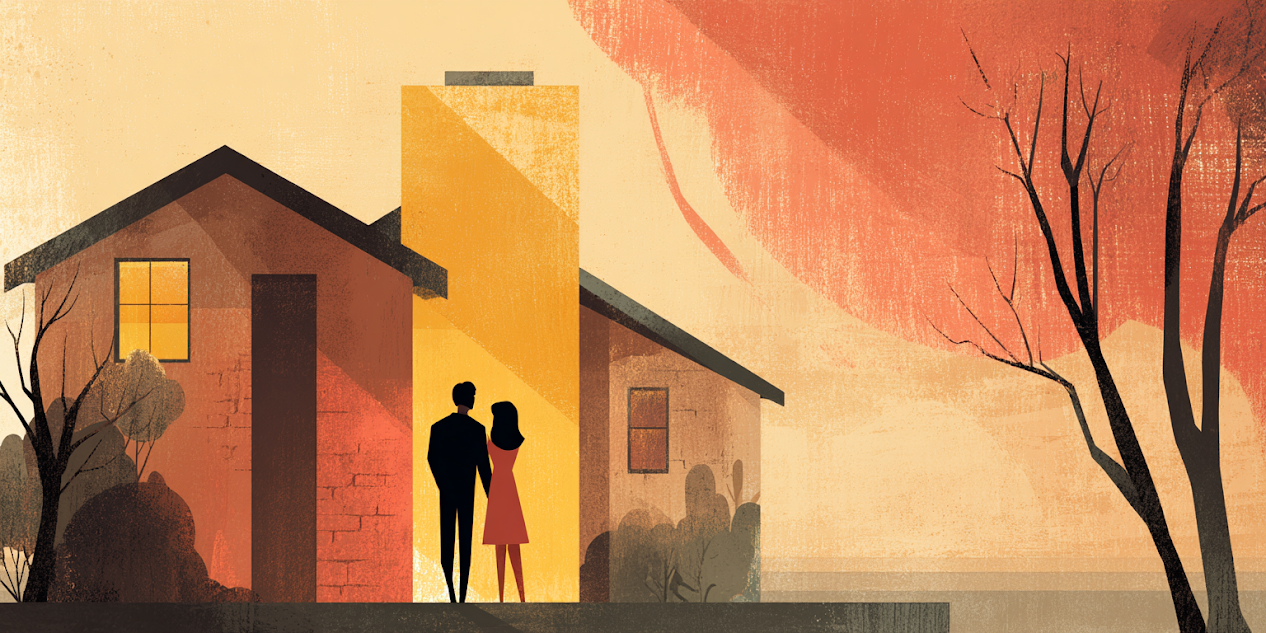
You’ve chosen the For Sale By Owner (FSBO) route, attracted by commission savings and complete control over your home sale. You recognize the advantages—direct buyer communication, financial benefits, and personalized showings. However, the main challenge facing FSBO sellers is visibility. How can you expose your home to local and nationwide buyers effectively? The solution lies in leveraging the Multiple Listing Service (MLS) and Zillow, the leading real estate portal. Skipping these platforms drastically reduces your buyer pool, especially those working with agents (who usually depend on MLS listings). This guide is tailored specifically for FSBO sellers who are determined to maximize their home’s exposure. Follow these steps to list your FSBO property effectively on MLS and Zillow, achieving professional-level results without a traditional real estate agent. Why MLS and Zillow Are Essential for FSBO Listings Forget limited strategies like yard signs and word-of-mouth—today’s digital real estate market requires a presence on MLS and Zillow. MLS: A comprehensive database used by real estate agents. Listing here ensures your home is visible to thousands of agents and their qualified buyers, greatly expanding your reach. Zillow (including Trulia and others): Zillow draws millions of direct buyers daily. Although direct FSBO listings are possible, Zillow primarily populates listings from MLS data feeds, ensuring widespread visibility across multiple real estate platforms. Enhancing your FSBO home’s presence on MLS and Zillow is vital to attracting serious buyers and maximizing your sale potential. Preparing Your Home for Maximum Appeal Your home must be market-ready before listing. Effective preparation is key to making a strong first impression online and in person. Essential Preparation Checklist: Declutter: Remove personal items and unnecessary furniture to create a spacious feel. Deep Clean: Thoroughly clean every room, paying extra attention to kitchens and bathrooms. Repairs: Address minor issues like leaking faucets, chipped paint, and loose fixtures. Curb Appeal: Maintain landscaping, add fresh flowers, and clean the exterior for a welcoming first impression. Staging Tips: Arrange furniture to highlight space and flow. Use neutral décor to create an inviting environment. Identify and emphasize your home’s best features clearly in your listing description. Mastering FSBO Photography–Your Most Effective Sales Tool Since buyers on the MLS and Zillow click based primarily on visuals, high-quality photos are crucial. Poor photos deter potential buyers regardless of your home’s actual appeal. DIY Photography Tips: Lighting: Photograph in natural daylight, turning on all interior lights. Wide-Angle Shots: Capture room size effectively. Shoot Horizontally: Horizontal photos display better online. Multiple Angles: Showcase each room from different viewpoints. Composition: Frame shots carefully, emphasizing key features. Detail Shots: Highlight upgrades like countertops or fireplaces. Avoid Common Photo Mistakes: Blurry or dark images. Visible clutter. Poorly framed or insufficient images. Inaccurate representations of space. Investing time in quality photography significantly enhances your FSBO listing’s appeal. Crafting a Compelling FSBO Listing Description An effective description engages and informs buyers. Important elements to include: FSBO clarity: Clearly indicate “FSBO” and provide direct contact information. Home Features: Clearly state bedrooms, bathrooms, square footage, lot size, and notable upgrades. Neighborhood Highlights: Mention proximity to schools, parks, shopping, transportation, and neighborhood quality. Descriptive Language: Use terms like “spacious,” “updated,” “bright,” and “move-in ready.” Sample Listing Snippet: “Welcome home! This spacious, bright 3-bedroom, 2-bath FSBO home boasts an updated kitchen with granite countertops and stainless appliances. Enjoy a private, landscaped backyard ideal for entertaining. Located in highly desirable [Neighborhood Name], close to parks and shops. Contact the owner directly for a private showing.” Avoid Common Pitfalls: Vague or overly brief descriptions. Grammatical errors. Misleading claims. Poor formatting or excessive punctuation. Listing Your FSBO Home on MLS Without a Realtor As a FSBO seller, you can’t list directly on MLS but can use flat-fee MLS services. So, what are flat-fee MLS services? Licensed brokers offer MLS listings for a one-time fee. You provide property details and photos; they manage the technical MLS listing tasks. You retain control of showings and negotiations, typically offering a commission only to the buyer’s agent (if you offer one at all). Choosing a Flat-Fee Service: Research and compare providers online. Select packages matching your needs (MLS listing, syndication, signage, etc.). Understand service agreements, listing duration, and change protocols. Provide detailed home information and photos. Ensure your service guarantees syndication to Zillow, Trulia, Redfin, and other key platforms. Maximizing Visibility on Zillow and Other Portals An MLS listing ensures automatic visibility on Zillow and numerous brokerage sites. Direct FSBO Listing on Zillow: Pros: Free, quick setup. Cons: Less prominence than MLS listings and no visibility to agent networks. Manual Zillow FSBO Listing Process: Visit Zillow, select “Post For Sale By Owner.” Input property details, photos, a compelling description, and contact information. Using MLS through flat-fee services remains the superior strategy for comprehensive visibility. Managing Inquiries and Offers Effectively Once listed, inquiries will come from both agents and buyers. Effective Inquiry Management: Set up dedicated email or phone channels. Respond promptly, clearly, and professionally. Be flexible with showings and knowledgeable about your home’s details. Negotiation Tips: Anticipate offers below asking price. Prepare for negotiations on price, contingencies, and timelines. Establish your minimum acceptable price beforehand. Finalizing Your FSBO Sale: Closing the Deal Closing involves handling legal documents and compliance. Consider engaging professionals to avoid pitfalls. Legal and Professional Assistance: Use state-approved real estate contract forms. Consider hiring a real estate attorney to review contracts and ensure compliance. Employ escrow or title companies for secure financial and legal transactions. Conclusion Successfully selling FSBO is entirely achievable through strategic MLS and Zillow exposure. By preparing thoroughly, using exceptional photography, crafting engaging descriptions, leveraging flat-fee MLS services, managing inquiries effectively, and securing necessary legal assistance, you significantly increase your chances of a successful, profitable sale. Ready to maximize your FSBO home’s potential? Explore flat-fee MLS options today to unlock comprehensive market exposure and connect directly with motivated buyers.
The Zillow Zestimate: Can it be Trusted?
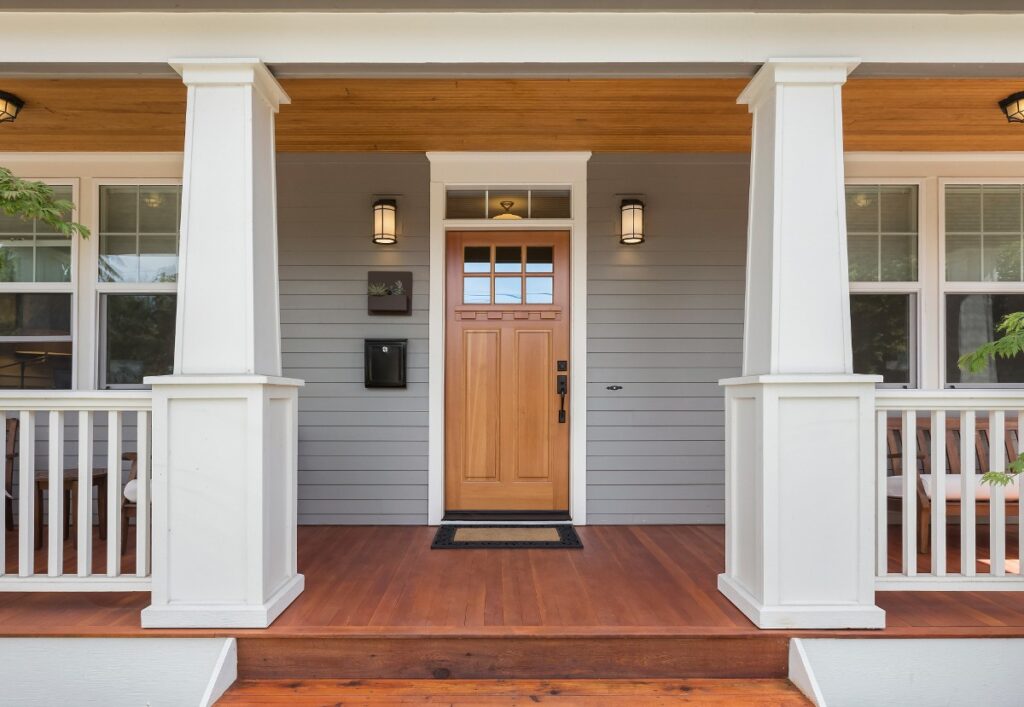
The Zillow Zestimate So what, exactly, is the Zillow Zestimate? This is Zillow’s proprietary home valuation tool, which can deliver an online estimate of value for most homes in the U.S. It relies on both public and user-submitted data, and its accuracy is partially dependent on just how much relevant data is publicly accessible. Some homes, for example, may have an unknown number of bedrooms – which impacts Zillow’s ability to price it accurately. There’s a few terms that are important to understand: Estimated home value: an approximate amount your home would sell for, based on what other, similar properties have recently sold for. True market value: what people are actually willing to pay for a home. List price/asking price: this amount is set by the homeowner, on the advice of their agent. It may or may not reflect the true market value. Because homes on the market have more info publicly available, their Zillow Zestimates tend to be a more accurate reflection of value than homes that are off market (such as yours, perhaps). Zestimate launched in 2011 and was quickly an industry game changer. Its inception has been both welcome and controversial. Zestimate was embraced by consumers, because it allows them to gain valuable information about their home’s worth with a single click. Before, this process may have involved identifying a lot of individual data points and talking to a local Realtor. Now, homeowners can do a quick, casual check on their home’s value every month if they want. However, Zestimate has also been controversial, because it’s not an appraisal – but consumers often treat it like one, which can lead to a misunderstanding of how much their home is really worth. These misunderstandings can have real-world consequences if consumers misprice their homes. But more on this below. How accurate is Zestimate? The Zestimate is often less accurate than your Realtor’s estimate and can be thousands of dollars off. According to Zillow’s Zestimate page, “The nationwide median error rate for the Zestimate for on-market homes is 1.9%, while the Zestimate for off-market homes has a median error rate of 7.5%. This means that the Zestimates for half of all on-market homes are within 2% of the selling price, and half are not.” This may seem like a negligible percentage – and for some homes, it is. However, take the example of a home with a true value of $600,000. If the Zestimate is 7.5% off, the home Zestimate could be as high as $645,000 or as low $561,000. And 7.5% is only the U.S. median – in a market like Pittsburgh, where the median error rate is 11.3%, the Zestimate range jumps from $532,200 to $667,800 for a $600,000 home – a range of over $100,000. According to Real Estate Decoded, this breaks down to a typical error of $18,000 for an unlisted home. Duvora’s 2019 case study “Exactly How Bad Are Zillow “Zestimates?” samples three homes per city in three major cities (Chicago, New York, Los Angeles). The study, which selected homes at random, indicated just how wide this range could really be. For homes in LA, the Zestimate was fairly accurate – hovering close to -5% for all homes. The New York homes, though, were all dramatically undervalued by the Zestimate. The author of the case study concluded that one issue was that the Zestimate, due to its reliance on comparables (past sales), often can’t pick up on the rapid price surges that happen in a seller’s market (which won’t necessarily be reflected in past sales). Here is how an example home fared in each market: Chicago: Sold -9.45% below Zestimate New York: Sold +60.07% above Zestimate Los Angeles: Sold -4.9% below Zestimate So: while the Zestimate can give homeowners an idea of very basic worth, it can also be pretty misleading. Can you dispute the Zillow Zestimate? Many homeowners worry that when the Zillow Zestimate is such a widely used tool by homebuyers, a lower Zestimate can adversely affect their ability to sell their home. After all – if a buyer thinks your home is worth $200,000 after visiting Zillow, it’s going to be harder to convince them to pay your asking price of $240,000. (There was even a Zillow Zestimate lawsuit by homeowners for this reason – but the court sided with Zillow.) So how can you update the Zestimate? The first thing you should do is register with Zillow and claim your property. Once you’ve verified your identity, you’ll be able to edit information like how many bedrooms you have, remodeling details, etc. Zillow uses public tax records as the basis of off-market Zestimates, so having your home appraised – and therefore updating the public tax records – will ultimately impact the Zestimate. If you can, it’s a good idea to double check your Zestimate before you go to sell so you can work to resolve any inaccuracies, since it may take time for these changes to be reflected in the Zestimate price. What sort of factors impact Zestimate accuracy? You know now that the Zestimate can be off sometimes: what factors play into this? It turns out, there’s a few big ones. “Zillow can’t see inside your home, they don’t know what features it has, they don’t take into account upgrades you may have, and it doesn’t take into account your neighborhood versus another neighborhood in the same zip code,” explains Baltimore-based listing agent June Piper–Brandon. Consider how relevant these are to your home and neighborhood: Home improvements According to a 2019 report from Trulia, about 90% of homeowners surveyed planned to do a home renovation – with the bathroom and kitchen being the most cited projects. This “Should You Renovate Before Selling?” guide has more specific information on important metrics like ROI – but in general, these projects add value to your home. Projects like bathrooms and kitchens, though, often don’t require permits – which means the Zillow Zestimate won’t be automatically taking them into account. Housing turnover Hot neighborhoods are easier to price than neighborhoods with slow turnovers, since recently sold homes mean more comparables. The Neighborhood Zillow often can’t break down data street by
The Ultimate Guide to Downsizing Success: Expert Advice for Homeowners in Their 60s

For couples in their 60s, the family home is often more than just a house—it’s a scrapbook of life’s most cherished moments. From raising children to hosting holiday feasts, every room holds a story. But as the years go by, that once-perfect home might start to feel like a burden. The upkeep is exhausting, the space is underused, and the costs keep climbing. Downsizing can be the answer: a chance to simplify, save money, and focus on what truly matters—whether that’s travel, hobbies, or just enjoying a quieter life together. At HomeRise, we understand that downsizing is both an exciting opportunity and a daunting challenge. That’s why we’ve created this guide to help you navigate the journey with confidence. From emotional preparation to financial planning and practical steps, we’ll show you how to avoid common pitfalls and make the most of this transition. And with HomeRise’s flat-fee listing service starting at just $95, you’ll save thousands on commissions, keeping more of your hard-earned equity for the next chapter. The Emotional Journey of Downsizing: Honoring Memories While Embracing Change Leaving a home you’ve lived in for decades isn’t just a physical move—it’s an emotional one. But with the right mindset and strategies, you can honor the past while stepping into a future that’s lighter and freer. Managing Sentimental Attachments Start Early, Go Slow: Begin the decluttering process 6-12 months before your move. Tackle one room or category (like old photos or holiday decorations) at a time. Set aside a weekend morning each month to sort through the attic or garage, so it feels manageable. Preserve Memories Creatively: Before parting with sentimental items, capture their essence. Take photos of your children’s growth marks on the doorframe or the backyard where you hosted summer barbecues. Compile these into a digital slideshow or a printed memory book—a keepsake you can revisit without the clutter. Share the Love: Involve family in the process. Host a “memory day” where loved ones can choose items they’d like to keep, from your vintage record collection to the dining table that saw countless family dinners. One couple we worked with found joy in seeing their granddaughter take home the rocking chair where stories were once read. Creating New Possibilities Focus on Freedom: Downsizing isn’t about losing space—it’s about gaining freedom. A smaller home means less time cleaning empty rooms or maintaining the yard, and more time for that cross-country road trip or perfecting your tennis game. Imagine weekends spent exploring new hobbies instead of fixing leaky faucets. Visualize the Future: Picture a home that fits your life now—cozy, efficient, and tailored to your needs. One HomeRise client described their new condo as “a breath of fresh air”—just the right size for two, with a balcony perfect for morning coffee. Financial Considerations: Maximizing Savings and Planning for the Future Downsizing can significantly boost your financial security, but it’s essential to understand the full picture—especially the hidden costs and tax implications. With HomeRise’s flat-fee listing service, you’ll save thousands upfront, but smart planning ensures those savings grow. Hidden Costs to Watch For Moving Expenses: Local moves typically cost $2,000-$5,000, while long-distance moves can reach $10,000. Save by booking during off-peak months like October or January. Home Prep Costs: Boost your sale price with strategic updates. A fresh coat of neutral paint ($2,000-$4,000) or updated kitchen hardware ($500-$1,000) can make your home more appealing. Curb appeal matters too—$1,000 on landscaping could yield thousands more from buyers. Transition Expenses: If your move dates don’t align, budget for storage ($100-$200/month for a 10×10 unit). Don’t forget to plan for the costs of temporary housing if needed. Tax Implications and Financial Planning Capital Gains Break: If you’ve lived in your home for two of the last five years, you can exclude up to $500,000 of profit from taxes as a married couple. For example, if you bought your home for $200,000 and sell it for $600,000, that $400,000 gain is likely tax-free. If your profit exceeds $500,000, consult a tax professional. Property Tax Shifts: A smaller home might mean lower taxes, but check rates in your target area. Moving from a suburban house to a trendy urban condo could keep taxes similar—or even raise them. Retirement Impact: With an income of $125,000, you’re likely nearing or in retirement. Your home’s equity can fund your future—will you buy a smaller place outright, pay off debt, or invest? A financial advisor can help you decide how to use the proceeds wisely. Save Thousands with HomeRise Traditional real estate agents charge an average of 3% listing commission, costing you $15,000 on a $500,000 home sale. With HomeRise’s flat-fee listing starting at $95, you’ll keep a lot more of your equity. Not sure you can handle things on your own? For full-service support, our full service 1% commission option still saves you $10,000 compared to traditional agents. That’s money you can use for your next adventure or to pad your retirement fund. Strategic Planning: Your Step-by-Step Downsizing Timeline A well-organized plan keeps downsizing from feeling overwhelming. Here’s a 12-month roadmap to guide you through each phase. Your 12-Month Timeline Months 12-9: Research and Dream Use HomeRise’s free tools to estimate your home’s value. Start browsing potential downsizing locations—perhaps a beachside condo or a low-maintenance townhome near the grandkids. Months 8-5: Declutter with Purpose Begin with low-emotion areas like the garage. Use four boxes: Keep, Donate, Sell, Trash. Set a weekly goal—two hours every Saturday morning. One couple digitized their old family videos, freeing up space while preserving memories. Months 4-2: Prep Your Home Invest in updates with high ROI: paint walls in soft grays or beiges ($2,000-$4,000), replace outdated light fixtures ($500-$1,000), and stage your home (around $2,000) to highlight its best features. Months 1-0: Sell and Move List with HomeRise for maximum savings. Be ready for showings—consider staying with family during peak times. Hire movers who offer unpacking services to make your new place feel like home faster. Finding Your Next Home: A Space for Today and
2025: Keep Your Equity Without the FSBO Hassle

As we move into 2025, we’re seeing a significant shift in how savvy homeowners are approaching the home selling process. With mortgage rates currently at 7.25% and buyers becoming more selective, protecting your equity has never been more important. Here’s the good news: you no longer have to choose between paying high commissions or tackling a For Sale By Owner (FSBO) sale completely on your own. Why Traditional FSBO Might Not Be Your Best Option in 2025 Let’s be candid about what we’re seeing in the market. Zillow forecasts a modest 2.6% home value growth in 2025 – the slowest growth rate in years. In this environment of minimal appreciation, protecting your existing equity becomes absolutely critical. With home values barely outpacing inflation, traditional FSBO might seem tempting as a way to protect your equity. But in this slower market, consider these critical realities: Buyers are taking more time to make decisions Proper pricing is becoming increasingly critical Access to the MLS and major real estate platforms is essential for maximum exposure Negotiating power is shifting, requiring more strategic pricing and marketing A Smarter Approach for 2025 Looking for a way to keep more of your equity without taking on all the complexities of FSBO? HomeRise has developed a solution that gives you the best of both worlds. For just $95, you get: Full MLS listing access (where 87% of buyers find their homes) Presence on major platforms like Zillow, Redfin, and Realtor.com Professional guidance on pricing and marketing All the tools you need to sell effectively Plus, you’ll only pay a small settlement fee at closing, saving tens of thousands compared to traditional commission structures. Making the Most of the 2025 Market The market is showing clear signs of change. With existing home sales projected to rise by 15% year-over-year, there’s opportunity in this market – if you approach it right. Here’s what we’re advising our clients: Timing Matters: Watch for mortgage rates to potentially ease from current levels (7.25%) to between 6.2% and 6.4% by year-end Price Strategically: With more inventory coming to market, especially in regions like the Sun Belt, precise pricing is crucial Maximize Exposure: Getting your home on the MLS and major platforms isn’t just helpful – it’s essential Keep Your Options Open: Having professional support without high commissions gives you the flexibility to adapt to market changes The Numbers Make Sense Let’s look at a practical example. On a $400,000 home: Traditional 6% commission: $24,000 FSBO challenges: Limited exposure, potential pricing mistakes, legal risks HomeRise solution: $95 listing fee + small settlement fee = keep more of your equity while getting professional-level exposure Your Next Steps The 2025 market is showing promising signs of increased activity, but it’s also becoming more sophisticated. Buyers have more choices and are taking their time to make decisions. This means you need the right tools and exposure to succeed – without unnecessarily sacrificing your equity. If you’re considering selling your home this year and want to explore a smarter alternative to traditional FSBO, look into what HomeRise has to offer. You’ll discover how to get the market exposure you need while keeping more of your hard-earned equity. Looking Ahead As we progress through 2025, we expect to see more homeowners embracing this modern approach to home selling. The market is evolving, and so should your selling strategy. Remember, you don’t have to choose between paying high commissions or going it completely alone – there’s a better way. Sources: Zillow Research, Yahoo Finance, Housing Wire, National Association of Realtors
The Best Time to List Your Home for Sale by Owner: A Seasonal Guide

Selling your home “For Sale By Owner” (FSBO) can be an exciting and rewarding endeavor. Timing, however, is a critical factor in ensuring your success. Understanding the seasonal dynamics of the real estate market is key to capturing buyer interest and securing a favorable sale. This guide will walk you through the best times to list your home, tailored to each season, with actionable strategies to maximize your results. How the Real Estate Market Changes with the Seasons The real estate market experiences natural ebbs and flows throughout the year, influenced by factors such as weather, school schedules, and economic conditions. Buyer activity tends to peak during warmer months when moving is more convenient, and inventory is often highest during these times. Conversely, colder months can see reduced buyer activity, but also less competition among sellers. Factors That Influence Buyer Activity Weather and Climate: Warmer weather typically encourages more home viewings and open houses. School Year Schedules: Families often plan moves during summer to avoid disrupting school for their children. Economic Conditions: Interest rates and job market trends play a significant role in buyer motivation year-round. Seasonal Breakdown: When to List Your FSBO Home Spring: The Peak Selling Season Spring is often considered the best time to list a home due to the surge in buyer activity. Warmer weather, longer days, and the desire to settle before summer vacations make spring a prime time for selling. Advantages of Selling in Spring: High demand often leads to competitive offers. Buyers are eager to close deals before summer begins. Tips for FSBO Sellers: Focus on curb appeal with fresh landscaping and exterior maintenance. Highlight outdoor spaces, as buyers often envision summer gatherings. Summer: Strong Demand, But Challenges Arise Summer remains a strong season for home sales, especially for families who want to move before the new school year. However, the market can slow in mid-summer due to vacations. Advantages of Selling in Summer: Continued buyer interest from spring. Longer daylight hours for showings. Tips for FSBO Sellers: Schedule open houses during cooler parts of the day. Showcase air conditioning and other features that help beat the heat. Fall: A Balanced Opportunity Fall can be a great time for FSBO sellers to list, with serious buyers still active but less competition from other sellers. The cooler weather and seasonal ambiance can create a cozy appeal. Advantages of Selling in Fall: Motivated buyers who want to close before the holidays. Less inventory on the market. Tips for FSBO Sellers: Use seasonal decorations to enhance your home’s appeal. Focus on indoor lighting to combat shorter days. Winter: A Niche Market Winter may seem like an unlikely time to sell, but it offers unique advantages for FSBO sellers. Buyers who are active during this time are often highly motivated, such as those relocating for work. Advantages of Selling in Winter: Less competition from other sellers. Buyers are often serious and ready to close quickly. Tips for FSBO Sellers: Keep walkways clear of snow and ice for safe showings. Create a warm and inviting atmosphere with strategic staging. Regional and Practical Considerations Regional Variations in Seasonal Trends Warmer Climates: In regions with mild winters, buyer activity may remain steady year-round. Colder Climates: Spring and summer dominate, but winter offers opportunities for motivated buyers. Timing Considerations for Sellers Start preparing your home at least two months before your target listing date. Research local market trends to identify high-demand periods in your area. Strategies for FSBO Success in Any Season Season-Specific Tips Spring/Summer: Emphasize outdoor features and host open houses during weekends. Fall/Winter: Highlight cozy interiors and energy-efficient features. Using Seasonality to Appeal to Buyers Incorporate seasonal decor, such as flowers in spring or festive touches in winter. Adapt your marketing materials to reflect the season’s mood and aesthetics. Economic and Market Influences Broader economic factors, such as interest rates and inventory levels, can override seasonal trends. FSBO sellers should monitor: Local real estate reports to gauge market conditions. National trends that may affect buyer behavior, such as mortgage rate changes. Avoiding Common Mistakes Timing Pitfalls to Watch For Listing too late in the season, missing the peak buyer activity. Failing to prepare your home adequately before listing. Proactive Planning Create a checklist to ensure your home is market-ready well ahead of your desired listing date. Use professional photography to make a strong first impression online. Conclusion Timing your FSBO listing to align with seasonal trends can significantly enhance your chances of success. By understanding the unique opportunities and challenges of each season, tailoring your strategy to regional and economic factors, and avoiding common pitfalls, you can confidently navigate the FSBO process and achieve your home-selling goals.
